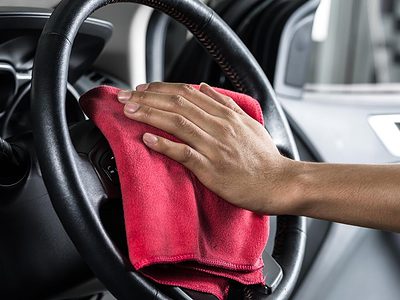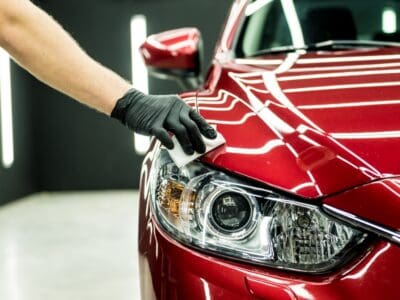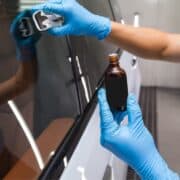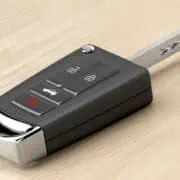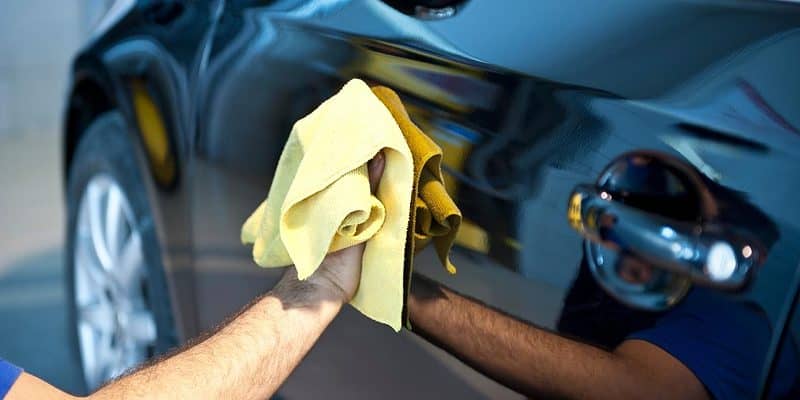
What is car detailing and how does it differ from washing? Aren’t they the same thing?
Not quite.
Car detailing encompasses pretty much everything you can do to your vehicle—washing included—to make it look spotless, in and out. It is best done by skilled car detailers who can completely change your car’s outlook.
This article answers the question, “what does car detailing include?” and will show you everything you need to know about the subject.
What Is Car Detailing?
Professional car detailing is the art and craft of giving a vehicle a clean, renewed look. It’s the process of restoring the newness of your car, inside out.
Detailing is a more meticulous and labor-intensive service job than a manual car wash. This is because, aside from being done by hand, it involves several interior and exterior processes.
A detailing specialist will carefully clean, polish, and protect your vehicle’s interior and exterior by hand, reaching into the furthest areas of your car, like the wheel wells and trunk jabs. Depending on the services you need, they’ll also fix certain aspects of your exterior, restore your paint job, and wax the vehicle.
While a car wash will clean your car’s exterior (and interior sometimes), a detailer will clean and perform a couple of other procedures to maintain your car’s value.
What Does Car Detailing Include?
Now you know what car detailing means for the most part. But what does car detailing include?
There are various services you can choose from when getting your car detailed.
Many professional detailers provide two packages: an interior detailing package focusing on the inside of your car and a full-detailing package combining interior and exterior detailing.
Here’s what each entails.
Interior Car Detailing
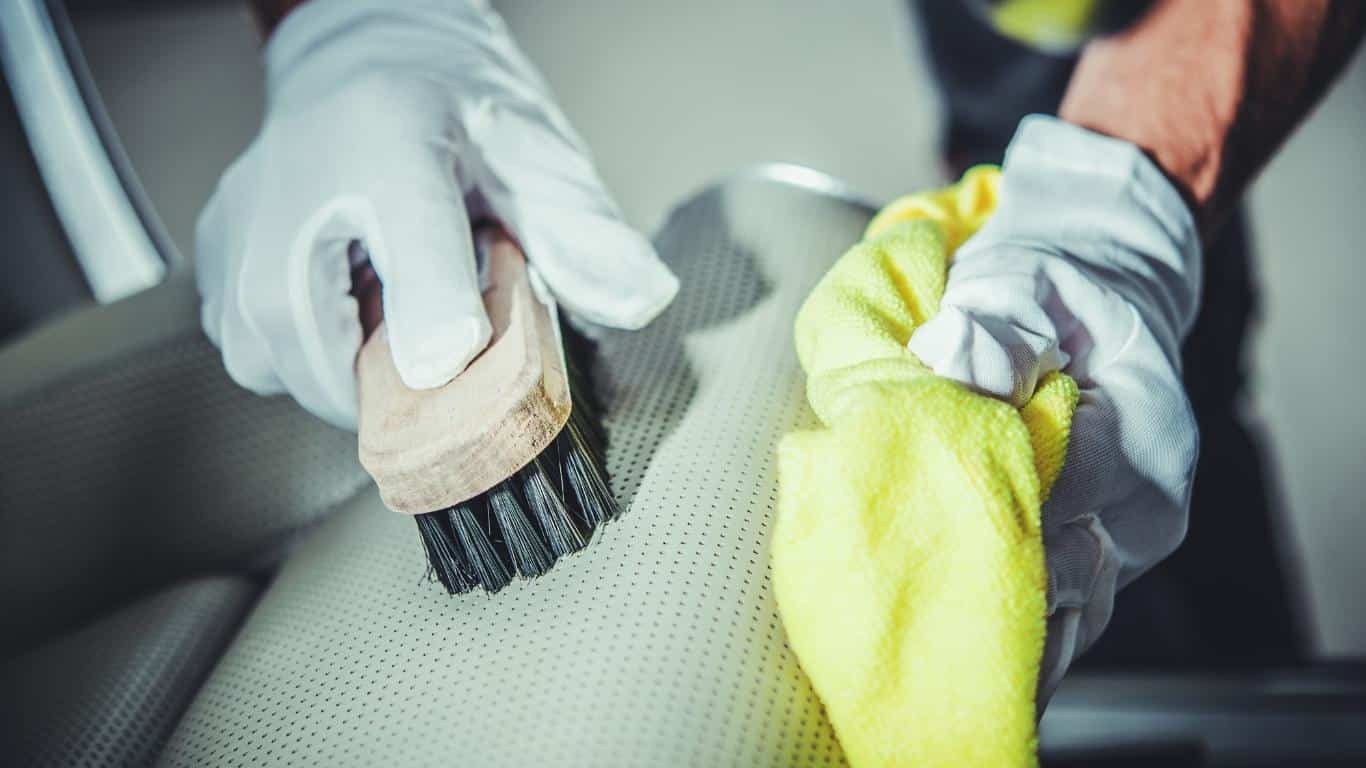
Though it’s concealed, the interior of your car matters just as much as—if not more than—the exterior. So, it’s not out of place to put in a reasonable amount of effort and time to clean it.
A dirty interior not only gives off a bad smell but can be an operational impediment. For example, stain and grit can cause switches to fail, while foggy windows can block your line of sight. These are just a few issues you may have if you neglect your car’s interior.
Here are some of the typical processes involved in interior car detailing:
Vacuuming
This is usually the first step to take. It involves vacuuming seats, carpets, headliners, shelves, rear cargo area, and trunk. It aims to eliminate as much dirt and debris as possible. Areas that cannot be reached using a vacuum can be sorted with an air compressor to blow out the dirt first.
Scrubbing and Brushing
Scrubbing and brushing help to eliminate stains on carpets and mats. First, a thorough scrubbing is done to remove any stain and blemish the mats may have accumulated over time. Afterward, the carpets are left to dry totally to prevent mildew formation.
Steam Cleaning
This is best used for cleaning seats and carpets with stains that are tough to remove.
Glass Cleaning
This involves thoroughly cleaning all the glass areas of your car—windshields, rear mirrors, side mirrors, etc. It is best done with a window cleaner, so the glasses remain gleaming. It also ensures your sight is not impeded by any blemish when driving.
Leather Cleaning
This involves cleaning all the leather parts of your car (if any) with leather cleaners and saddle or leather soaps and wiping them with a damp cloth afterward. A leather conditioner is usually used to make cleaning more effective if the leather is dry.
Re-Vacuuming and Wiping
After all the previous work, this removes any dirt left in the car’s interior. Also, the dashboards and windows are wiped clean using a clean microfiber cloth.
Perfuming
Most detailers spray deodorant in the car to finish the job so the car retains a good scent.
Exterior Car Detailing
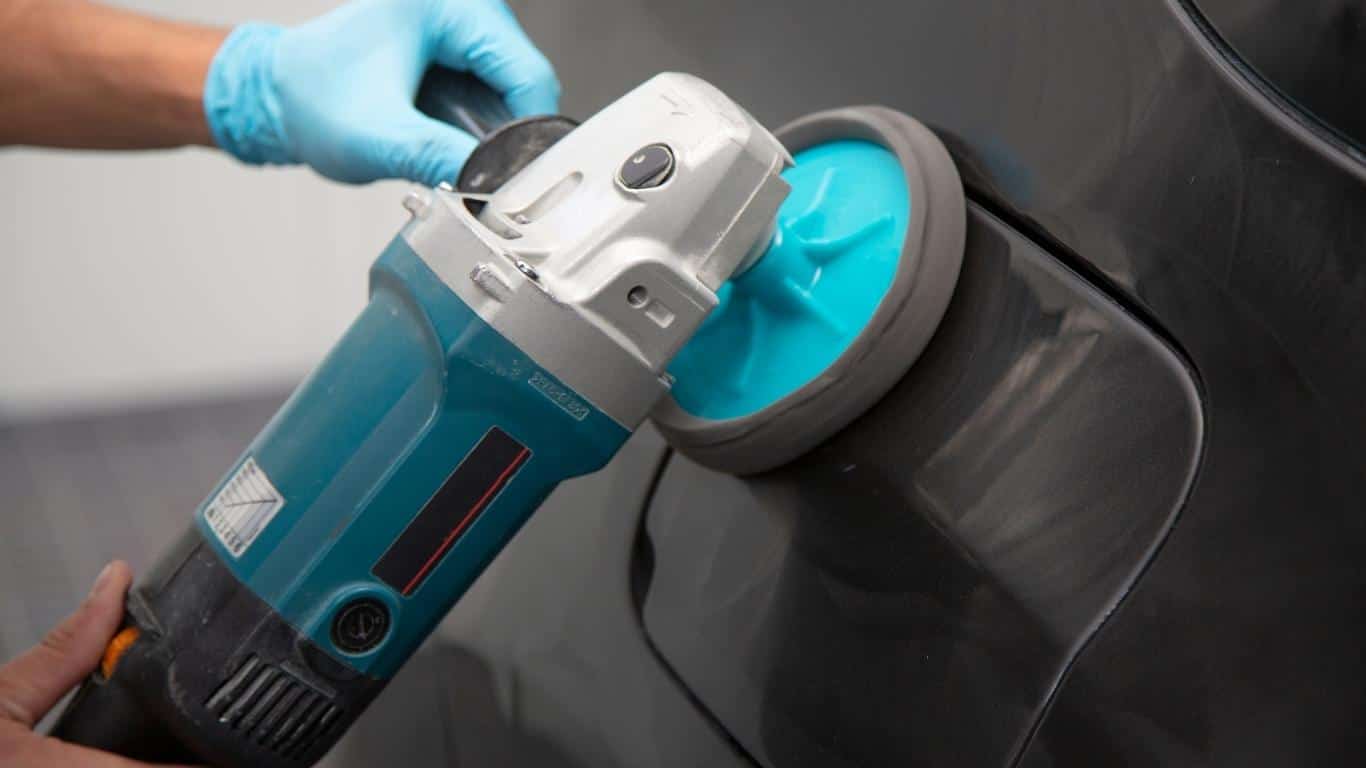
Exterior car detailing involves proper washing and maintenance of the external components of a vehicle. A good car detailer will ensure that the car keeps its shine, has reduced surface marks, and always wears a shielding paint sealant.
Exterior Wash and Dry
This process involves washing and drying a car by hand. The car detailer will spray and wash the car’s body with car wash soaps and other specially designed products. This process also involves hand washing the door handles, rims, and other outer parts of your car.
Paint Claying
This involves using a clay bar to remove impurities, contaminants, overspray, and any other residue that remains on the car’s body after it has been washed. This gives your vehicle a sleek surface and helps to raise the efficiency of the polish and wax that will be applied later.
Polishing
Polishing burnishes an abrasive compound onto your car’s paint to reinstate the original look and shine.
Sealing
This involves applying a car sealant to give the car a sparkling shine. It also functions as a protective layer for the paint.
These are the typical exterior detailing services, but you could also get extra packages like trim repainting, engine detailing, headlight polishing, engine pressure cleaning, bumper repair, glass chip repair, and paint touch-up.
Additional Car Detailing Services
Some professional car detailing companies usually have extra services to offer aside from the ones described above. These include:
Paint Correction
This service helps to eliminate the defects and blemishes on the top layer of your car’s paintwork. A rotary machine polisher is the common choice of equipment to carry out this task.
Ceramic Coating
This service involves applying a liquid polymer on the exterior of your car to act as a protective layer for the paint. Think of it as an alternative to premium waxing.
Paint Protection Film (PPF)
PPF, short for paint protection film, is a thin polyurethane film that helps to shield your car’s paint from minor scratches, rock chips, UV light, mineral deposits, acid rain, and other things that could damage the outlook of the vehicle. This product—and by extension, service—offers more robust and reliable protection than ceramic coating.
How Much Does It Cost to Detail a Car?
A car detailing job is expected to cost you about $185–400, depending on the services you request and the size and state of your vehicle. Of course, interior detailing only will cost less than a full car detail.
Why Should You Detail Your Car?
A car detail will keep your new vehicle looking its best for longer. And if you’ve been using it for a while, it should help take your car close to its unique look.
Detailing protects your interior finish and safeguards your exterior (paint, clear coat, etc.). It also eliminates stains and odors you may not be able to take out yourself and helps to improve the resale value of your car.
Tip
Detailing your car before selling will increase the price much more than if you don’t.
Benefits of Car Detailing to the Owner
Car detailing has several benefits for car owners. Here are some of them:
Removes Scratches and Swirls
One of the biggest perks of car detailing is that it eradicates a lot of scratches and swirls from your car’s exterior. In addition, a professional auto detailing company can remove unsettling scratches from your vehicle so it looks close to new.
Improves the Smell of Your Car
The inner odor of your car can affect your mood while driving. If your vehicle smells unpleasant, it may be hard for you to concentrate – making driving difficult. Car detailing, however, can reinvigorate your interior’s smell and improve your mood as a result.
Slows Your Car’s Aging
Dirt, dust, and grime can damage various parts of your car through corrosion. A car detail job can stop or prevent this, reducing your vehicle’s wear, tear, and aging. This will keep it in good condition for longer.
Improves Your Driving Visibility
Water spots on the windshield and headlight of your car can be quite disturbing. They can also be pretty stubborn to remove with regular washing. However, car detailing can easily clean the headlight and front screen, allowing the beams to illuminate your path better and providing more visibility.
Get Your Car Detailed Every Now and Then
A car detailing service will make your car look and feel new again. While it costs a few hundred dollars, it’s well worth the money. Plus, you only have to do it every now and then, so it’s not a recurring expense.
The first step to detailing is washing. See our guide on how to properly wash your car at home.

